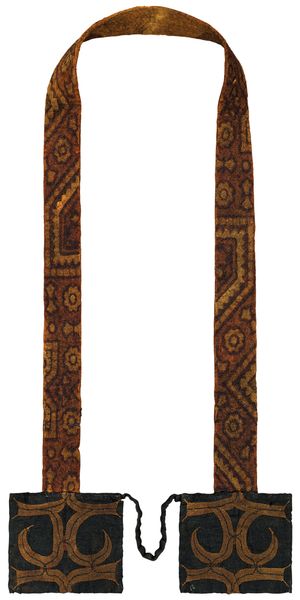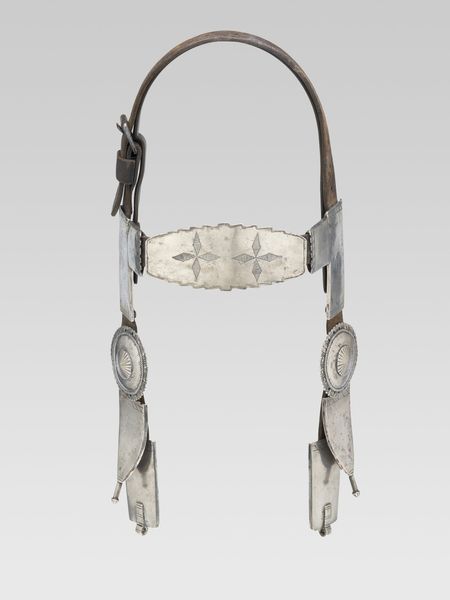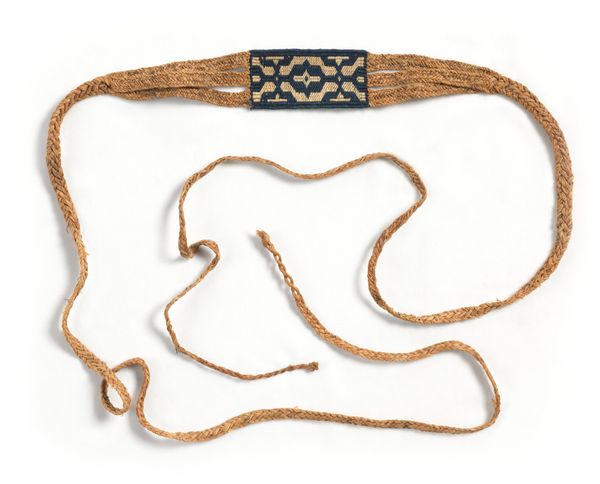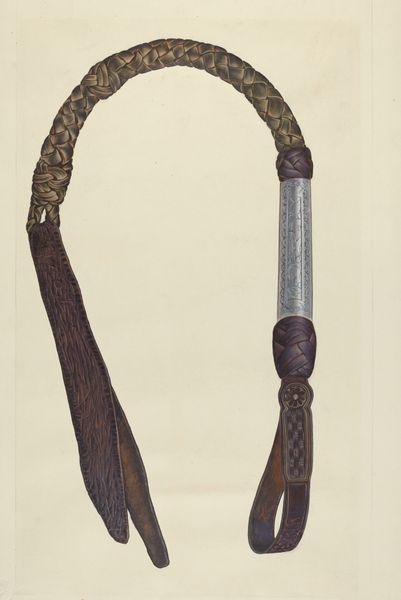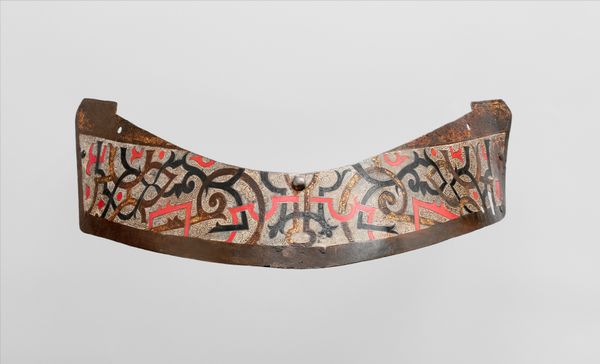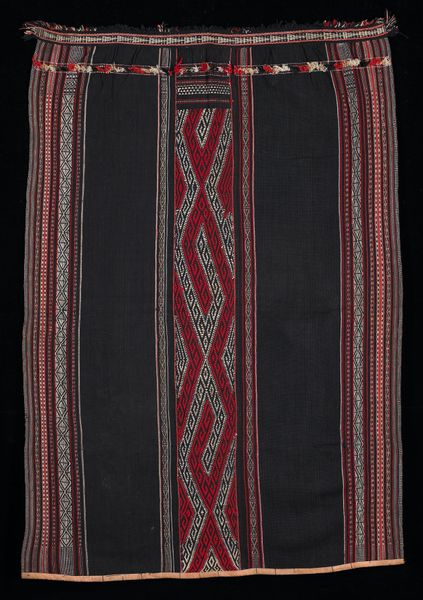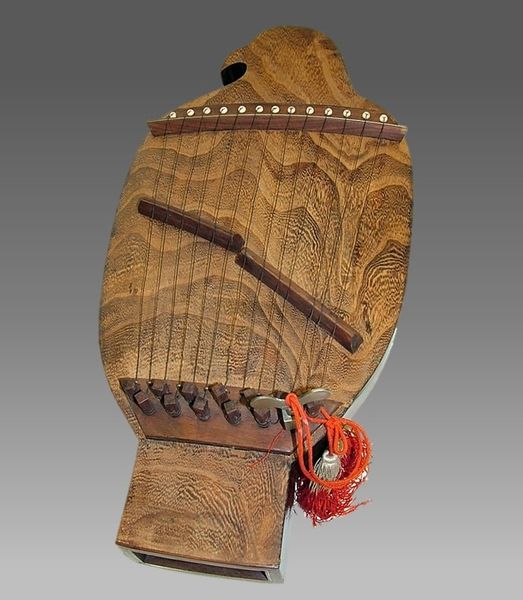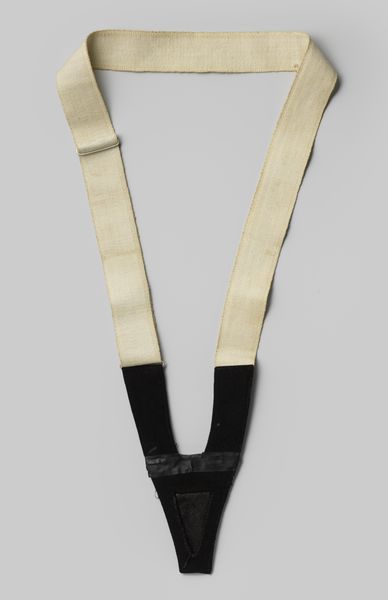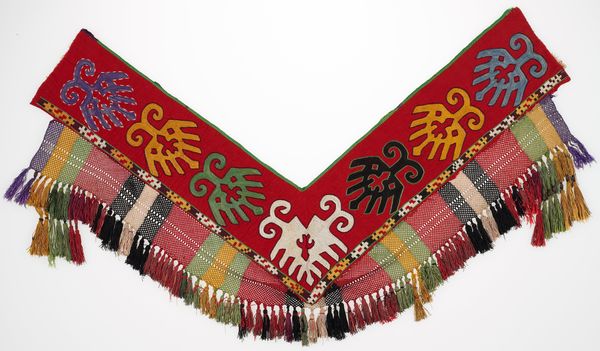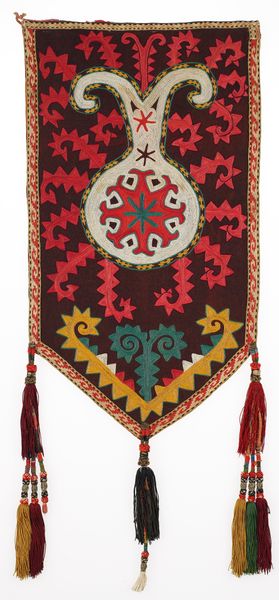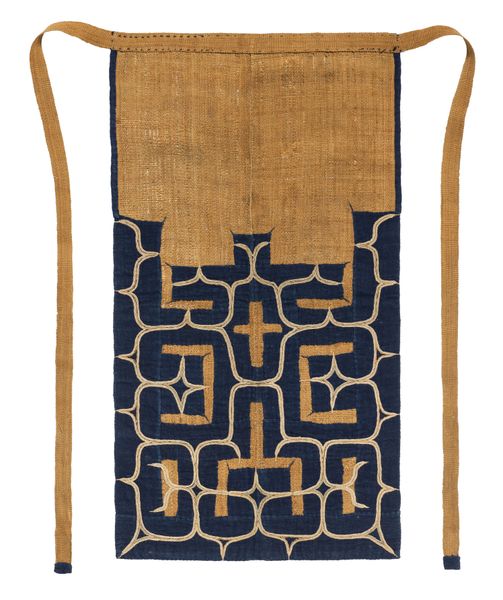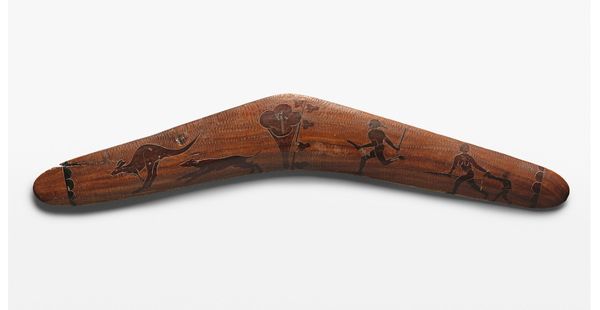
Sword (emushi) and holder (emushi-at) late 18th-early 19th century
0:00
0:00
print, textile
# print
#
asian-art
#
textile
#
japan
Dimensions: 29 × 21 5/8 × 3/8 in. (73.66 × 54.93 × 0.95 cm)
Copyright: Public Domain
Curator: This caught my eye immediately! I see such incredible craftsmanship here. The "Sword (emushi) and holder (emushi-at)" are dated to the late 18th-early 19th century. The artist is unknown. It resides here at the Minneapolis Institute of Art. Editor: My first impression is its formality, despite the rather simple palette. There is a strong geometric and symmetrical quality; the dark and light alternating weft patterns of the shoulder straps draw the eye up and around the whole piece. Curator: Absolutely. The geometric designs are more than decorative. For the Ainu people, these motifs serve as amulets, safeguarding the weapon's integrity and imbuing it with protective power, channeling ancestral forces. The shapes trigger subconscious patterns and expectations tied to status, gender, group identity and ritual practice. Editor: You see that, but I also note how effectively the brown tones play against the deep, dark blue almost creating depth. These visual aspects would likely contribute significantly to the perception of the bearer's stature. It seems crafted for a precise and balanced appearance. Curator: True. Function melds with ritual meaning here. Even the loops are more than simple embellishment. Scholars see the spirals evoking water or wind currents, representing interconnectedness, renewal, the endless cycles of nature. These echo core Ainu spiritual beliefs. It might represent "more than" the tangible sword. Editor: More than is literally displayed by the pockets themselves which adds visual disruption—a disruption that intrigues but still retains structural symmetry in the negative space created below. And the shoulder strap’s color change and shift to simple, brown unadornment as it goes up shows its wear, use. Curator: It suggests daily life blending with profound ancestral heritage. Looking at its position in the museum, this item transcends "weaponry." This particular object now serves as a cultural repository for an almost sacred practice. Editor: Precisely, the object’s "objectness" shifts according to viewer positionality. A fine illustration of material communicating complex information. A beautiful reminder of that complexity!
Comments
minneapolisinstituteofart almost 2 years ago
⋮
The Ainu did not themselves manufacture steel; they obtained their blades through trade with the Japanese. Swords (emushi) were therefore rare and valued for social and ceremonial functions. Some swords were refitted with a new wood scabbard carved by Ainu men; here the sheath is covered with decorated metal pieces. Contrary to the Japanese custom in the early modern period of carrying swords through the sash, an Ainu man used a fabric sword holder (emushi-at). Made by his wife or close female relative, the holder allowed the man to carry his sword across the back or over the shoulder.
Join the conversation
Join millions of artists and users on Artera today and experience the ultimate creative platform.
